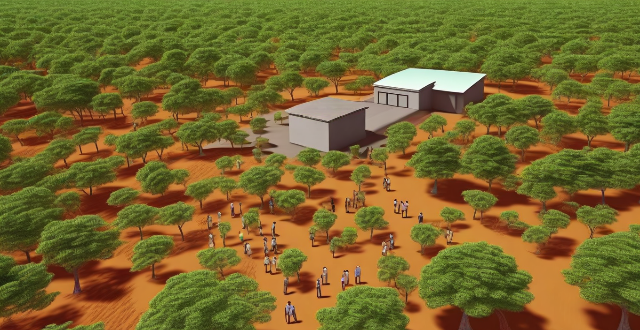Climate-smart technology plays a crucial role in achieving the Sustainable Development Goals (SDGs) by mitigating climate change, promoting sustainable agriculture, and supporting economic growth while protecting the environment. It can help reduce poverty by providing access to clean energy, improve agricultural productivity and resilience, improve public health by reducing air pollution, achieve affordable and clean energy, and directly contribute to climate action through the reduction of greenhouse gas emissions and adaptation to the impacts of climate change. Additionally, it can enhance other SDGs indirectly by promoting sustainable practices across various sectors.

The Role of Climate-Smart Technology in Sustainable Development Goals (SDGs)
Climate-smart technology plays a crucial role in achieving the Sustainable Development Goals (SDGs). These goals aim to address global challenges such as poverty, inequality, and environmental degradation by 2030. Climate-smart technology can help mitigate climate change, promote sustainable agriculture, and support economic growth while protecting the environment. In this article, we will discuss the different ways in which climate-smart technology contributes to the SDGs.
1. Achieving SDG 1: No Poverty
Climate-smart technology can help reduce poverty by providing access to clean energy, improving agricultural productivity, and creating new job opportunities. For example, solar panels and wind turbines can generate electricity for rural communities without access to the grid. This not only reduces their reliance on fossil fuels but also lowers their energy costs, allowing them to invest more in education, healthcare, and other essential services.
2. Achieving SDG 2: Zero Hunger
Climate-smart technology can contribute to achieving zero hunger by improving agricultural productivity and resilience. Precision farming techniques, such as drone monitoring and smart irrigation systems, can optimize crop yields while minimizing water usage and reducing greenhouse gas emissions. Additionally, climate-resilient crops and livestock breeds can withstand extreme weather events, ensuring food security for vulnerable populations.
3. Achieving SDG 3: Good Health and Well-being
Climate-smart technology can improve public health by reducing air pollution from transportation and industry. Electric vehicles and renewable energy sources can significantly reduce harmful emissions, leading to better respiratory health outcomes. Moreover, improved sanitation facilities and waste management systems powered by renewable energy can prevent waterborne diseases and protect ecosystems.
4. Achieving SDG 7: Affordable and Clean Energy
Climate-smart technology is essential for achieving affordable and clean energy. Renewable energy sources such as solar, wind, hydro, and geothermal power are becoming increasingly cost-competitive with fossil fuels. Governments and private sectors are investing in these technologies to reduce carbon emissions and transition towards a low-carbon economy. Furthermore, energy storage solutions like batteries and pumped hydro storage systems enable the integration of renewable energy into the grid, ensuring a stable power supply.
5. Achieving SDG 13: Climate Action
Climate-smart technology is directly related to achieving climate action through the reduction of greenhouse gas emissions and adaptation to the impacts of climate change. Carbon capture and storage technologies can remove CO2 from industrial processes and store it underground or in depleted oil reservoirs. Additionally, nature-based solutions such as reforestation and afforestation projects can sequester large amounts of carbon dioxide from the atmosphere while providing ecosystem services like biodiversity conservation and soil erosion prevention.
6. Enhancing Other SDGs
Climate-smart technology can also enhance other SDGs indirectly by promoting sustainable practices across various sectors. For instance, green building designs that incorporate energy-efficient materials and appliances can reduce energy consumption and minimize waste generation. Similarly, sustainable tourism practices that prioritize eco-friendly accommodations and transportation options can support local communities while minimizing environmental impacts.
In conclusion, climate-smart technology plays a vital role in achieving the Sustainable Development Goals by addressing multiple aspects of sustainability simultaneously. By adopting these technologies at scale, we can create a more equitable and resilient world for future generations.